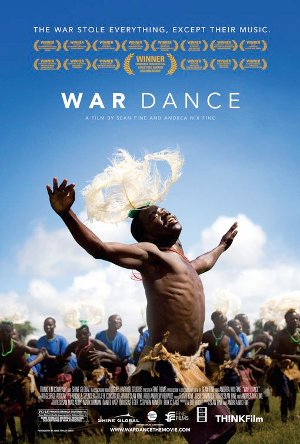- Title: War/Dance
- IMDB: link


The film tells the tales of three children – Nancy, Dominic, and Rose – from the Acholi tribe in the Pantongo region of northern Uganda. These children live in a refugee camp among 60,000 other members of their tribe, displaced by a violent terrorist group known as the Lord’s Resistance Army. Each has harrowing tales of tragedy to tell.
As the film opens these children, along with many others from the camp, are training and working towards winning the national dance competition in the town of Kampala. This is the first time a primary school from a camp such as this has earned a spot in the final competition and the children hope to do honor to their tribe and bring a trophy home.
The documentary from Sean Fine and Andrea Nix does many things well including capturing the look and feel of the various settings in the film from the camp, to the open bush, to Kampala. Facts and statistics are also inserted throughout the film in way that doesn’t make them seem forced or distracting.
I do however have two complaints about the film. The first is the lack of historical context from the film dealing with the reasons behind the terrorist rebels and the causes for the current situation. Although the film does present compelling individual stories and an overview of startling and saddening statistics it never really pulls all of this together.
My other complaint is the how the film uses the experiences of these young children for entertainment. The horrific accounts they are forced to relive for the camera seemed unseemly to me. These children, who can barely process what has happened to them let alone understand it, are asked to recount their experiences to the camera, and even visit graves of dead relatives for extra footage. Had these been adults and not children I don’t believe I would have had this reaction to the film, but it did feel to me, in places, that the filmmakers took advantage of these children in order to tell this tale.
Even in these bleakest moments the power of music is able to overcome. There’s a hopeful message here and joy mixed in with the overwhelming sadness. This is an important story, and even if I have some qualms about how it is told, it does deserve to be told. It will lead to discussion. The situation in northern Uganda, and in so many other places around the world, deserves attention.
